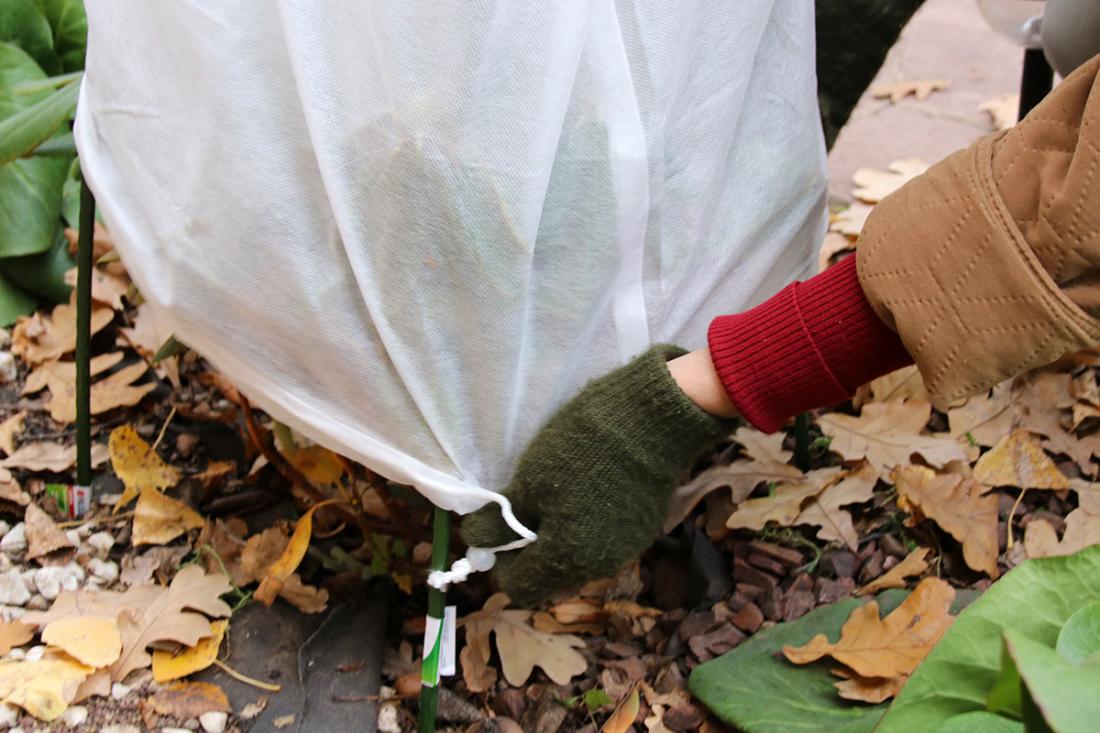OK, so we know this site is mainly devoted to Hardy Tropicals, but let's be honest... we all grow plants that don't belong in our zones. They need some love (and winter protection) too. It's getting close to that time of year that most of us gardener dread - the arrival of Jack Frost. Here in central South Carolina, we've already seen the temperature dip into the low 40's, which means it's probably not going to be long before the first frost is forecast in the coming weeks. This is an excellent time to get a jump start on your winter prepping for your non-hardy tropicals.

Here's a few simple and fundamental things we do to prep for winter.
1.) We take inventory of everything in the yard that will have to come indoors for the winter. In our case, that's our garage - where we have utilized Metal Halides, and now LED lights, to keep the plants alive. We try and record pot sizes as well so we know how much space we're going to need. It seems like every year the inventory list gets bigger, doesn't it?
2.) We clean up and trim up the plants that will come indoors. Removal of dead leaves, insects, and other debris helps get our plants ready for the indoor months.
3.) We clean up and prep the garage and/or greenhouse(s) for the plants we'll be moving in. Getting all the hoses in places for watering, figuring out where our walking paths will be, etc. Usually, I test my halide lights to ensure they are also working correctly and get all my power cords in place. This year, for 2010, we've added two new 400W halides in addition to our two 1000W halides, so we'll have extra growing space. Now if I could only find a way to keep the power bill from going through the roof. Update, for 2018-2019 winter we upgraded to all LED and that did help tremendously with cost and heat. The only downside is that you do need often more LED units to cover the same sq ft in growing area.

Cover what can't be brought indoors
4.) A few days before the first frost is forecast, we'll pull up our plants from the ground. We sink in a lot of our tropical planted pots, so they look like they are planted, and then dig up any other plants we want to save for potting (bananas and such) so that we can move everything indoors quickly before the coldest nights are upon us. This usually is a lot of work, but the preparation is well worth it.
5.) Finally, the big day arrives where everything gets moved indoors before the first night frost or freeze. If we've planned properly, this usually goes off without a problem, and everything fits as we've expected. Without proper planning, this can turn into a stressful and frenzied event. Something as simple as moving plants indoors for the winter can be a dreadful task without proper preparation and/or planning.
6.) Everything we've left in the yard that's hardy we usually try and protect with a good mulch of wood chips, straw, or dirt. A few of the bananas we'll wrap as well, though we're still debating how effective (if at all) that is. We lost so many bananas last winter, even those that were protected didn't fare well; but then again, it was a pretty harsh winter for us. But we do what we can to preserve our hardier tropicals outdoors.
7.) We usually wait a few days or even a week or more before our first watering of the plants. They are acclimating to the new lighting, and many are probably going into dormancy for the winter. Once they've adjusted some, we'll water them lightly for the first time.
8.) Then we wait. 5-6 months later, everything can go back out into the yard. Over the winter it's usually a battle with insects and knowing how much (or how much not) to water. Often we lose a few things along the way, while other plants are happy troopers and even grow through the winter.
For us here in central SC, we're getting close to step 4. It won't be too much longer before the first frosts. If we're lucky, it'll be November. Last year the first frosts were early in mid-October. But we're hoping this warm summer continues a bit longer into the fall.
Happy Gardening - and prepping for the winter.

